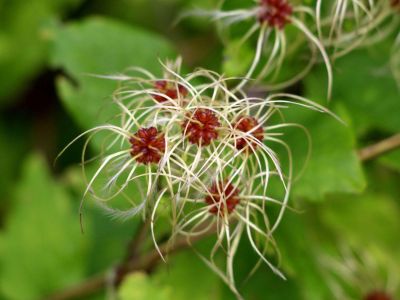What is Traveler’s Joy Vine?
Also known as Old Man’s Beard and Traveler’s Joy clematis, this plant is officially termed Clematis vitalba. It is a deciduous vine that flowers in the summer, producing creamy, white, or light greenish white blooms. In the fall they produce fluffy heads of seeds. Traveler’s Joy clematis is a climbing, woody vine. It can grow vines as long as 100 feet (30.5 m.). Native to Europe and Africa, it is considered an invasive weed in much of the U.S. The best growing environment for Traveler’s Joy is soil that is chalky or rich in limestone and calcium, fertile, and well-draining. It prefers temperate, moist conditions. In the U.S., it often crops up on forest edges or in areas that have been disturbed by construction.
Controlling Traveler’s Joy Plant
While in its native range Traveler’s Joy is often used ornamentally, it creates a lot of problems in the U.S. Clematis weed control may be necessary for your area for several reasons. The vines can grow so tall they block out sunlight for other plants, the vines can climb trees and shrubs (their weight-breaking branches), and they can quickly destroy understory trees and shrubs in forests. Glyphosate is known to be effective against Traveler’s Joy, but that comes with serious health and environmental concerns. To avoid herbicides, you will have to stick with mechanical means of managing this weed. Cutting down and destroying the vine is possible but can be time consuming and energy draining. Catch it early and remove plants and roots in winter. In places like New Zealand, there has been some success using sheep to control Traveler’s Joy, so if you have livestock, let them have at it. Goats are usually known for their “weed eating” too. Studies are currently underway to determine if any insects can be used to control this weed.
